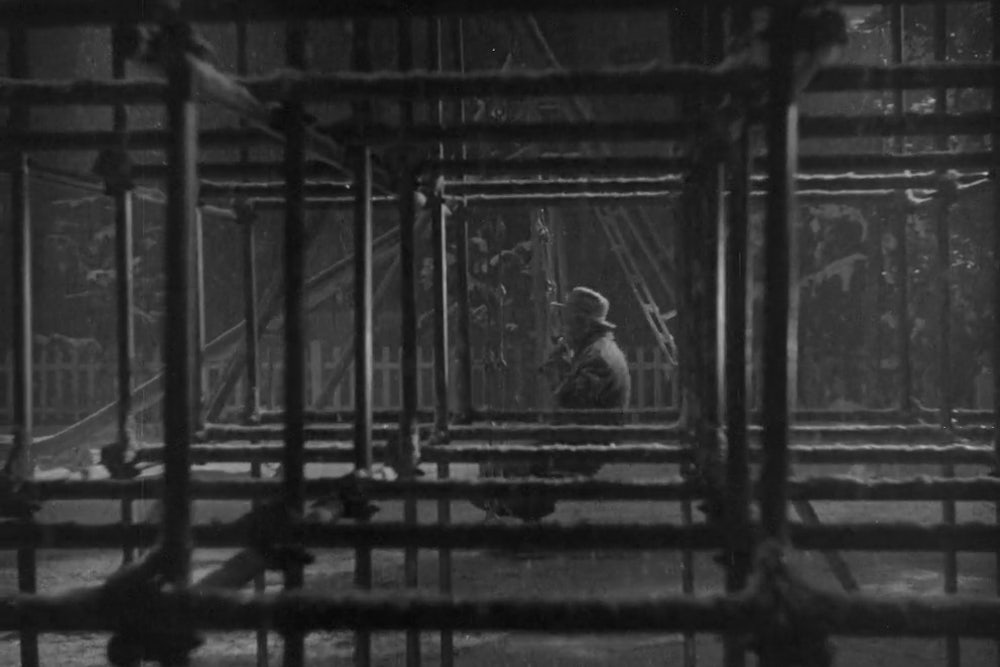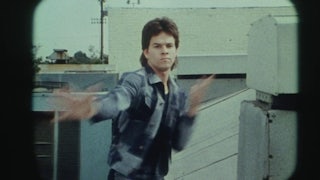Tolstoy’s entire novella might well be reprinted here for, in a sense, it is the best possible comment on the Japanese film under discussion. The picture is Ikiru (in English To Live), and the themes of the two works are the same: the realization of the approach of death; the bewilderment and anger at the course of one’s past life; the shame of fear; the knowledge that the world has already discarded you, that you merely make others uncomfortable; the inescapable holiness of your last days because you are already in touch with great secrets or the absence of them; and the revelation that only dying is death, that once a man dies, death is finished and all that remains is the man’s life—as it was—now unalterable and complete.
The picture begins, stunningly simply, with an X-ray; a narrator tells us that this is the stomach of the hero who will die in some months of gastric cancer. Then we see the man Watanabe sitting at his paper-laden desk in the city hall, unaware of his fate, a minor middle-aged bureaucrat in a hive of jealous underlings. He sits there endlessly stamping approval on endless papers and forms, and at once we want to shout: “For God’s sake, get out. You’ve wasted enough time. Get out and draw a few free breaths before it’s too late.”
We go with him to the hospital where, in spite of doctors’ euphemisms, he perceives the truth. We see the initial paralyzing shock, and through quick, beautifully economical flashbacks, done with the understatement of Japanese painting, we see his past life, widowhood, loving care for his son. Then Watanabe arouses from his shock to do something: to use his last months somehow. The first impulse is the frantic one. He withdraws half his savings and, with the aid of a bohemian whom he meets, he tries to go on a spree. But he can’t eat the food, the liquor sickens him, the trollops don’t really answer his needs.
Then he encounters a bright, vital girl who used to be a clerk in his section and, only for the sake of her company, begins to spend time with her; but she is soon bored with him because all he does is sit and look at her. When she threatens to stop seeing him, he becomes panicky and tells her of his sickness, why he needs her, that just once before he dies, he wants to touch life warmly, fully, and that he wants her—the seeming well-spring of it—to teach him how.
But she, in splendid ignorance, replies that she doesn’t understand him; she simply loves living and enjoys her new job—in a toy factory—because the toys give pleasure to thousands she will never see. The naïvete and obviousness of this do not prevent it from answering his question. He moves into a third phase. He returns to the office and takes up a petition of some mothers who have long pleaded to have a swampy lot in their slum neighborhood converted into a playground. Against massive bureaucratic resistance, Watanabe sets out to further their cause.
Here, alas, the film goes into an unduly long coda. When the doomed man begins his mission, we jump ahead to a wake held for him after his death. Various speeches are made at his funeral feast, there are numerous flashbacks filling us in on what happened between the last time we saw him alive and this occasion: how he fought the delays of office to realize his small ambition. This section is much too fully explored. If the wake had shown us the Deputy Mayor patronizing the dead inan but claiming credit for the playground and had then shown us the policeman bringing in the dead man’s hat (he died in the playground alone at night), that would have been sufficient. The last scene should have been that of the man sitting alone in a playground swing in the midnight snow, dying happily—if it is ever un-obscene to couple those two words.
This is a film rooted in the most universal of truths, the one that cuts across all cultural barriers, all concepts of love, success, God: the fact of mortality. It confronts that fact with honesty and a touching eagerness. Takashi Shimura, who (under the same director) was the woodcutter in Rashomon and the leader in The Seven Samurai, is magnificent as Watanabe: an actor who creates fiercely the indignity and helplessness and groveling fear of the man newly sentenced, along with the ravening hunger for sensual pleasure, then for spiritual refreshment, then for a crumb of achievement to be his immortality.
Excepting the slack editorial hand toward the end, it would be hard to overpraise Akira Kurosawa’s direction. He clearly has all the resources of film technique at his command and, confident of his knowledge, is not constrained to display it. Fancy montages, whirling effects, bizarre angles are no for him. It is his purpose to make life seem to occur and, like a true artist, he does this by showing less than would occur in life. He selects his elements perfectly, never lets the emotional scenes stray past sentiment to sentimentality, and with unmelodramatic juxtaposition weaves the elements in his story, letting the rhythm as well as the content flick away at our sensibilities with gentle, telling strokes.
As for the wake, which seems discursive, since the ceremonial itself is more meaningful to a Japanese than it could be to us, the irony of its treatment here is bound to be somewhat ineffectual. The purely human elements in the film are placeless; ritual, both in life and art, is parochial.
The only film comparable to this that I can remember is de Sica’s Umberto D. which too treats of the failing of the light, but Ikiru is, for me, more powerful. (Incidentally, it is a strong refutation of one aspect of neo-realism, which Umberto D. represents. Kurosawa’s fine cast, especially Shimura, is more credible and affecting than any carefully coached group of “real” people could possibly be.) Moreover, it is not an exercise in gloom. Because it faces and penetrates and diminishes true horror, the film achieves a measure of Tolstoy’s effect: it shrives and strengths.






